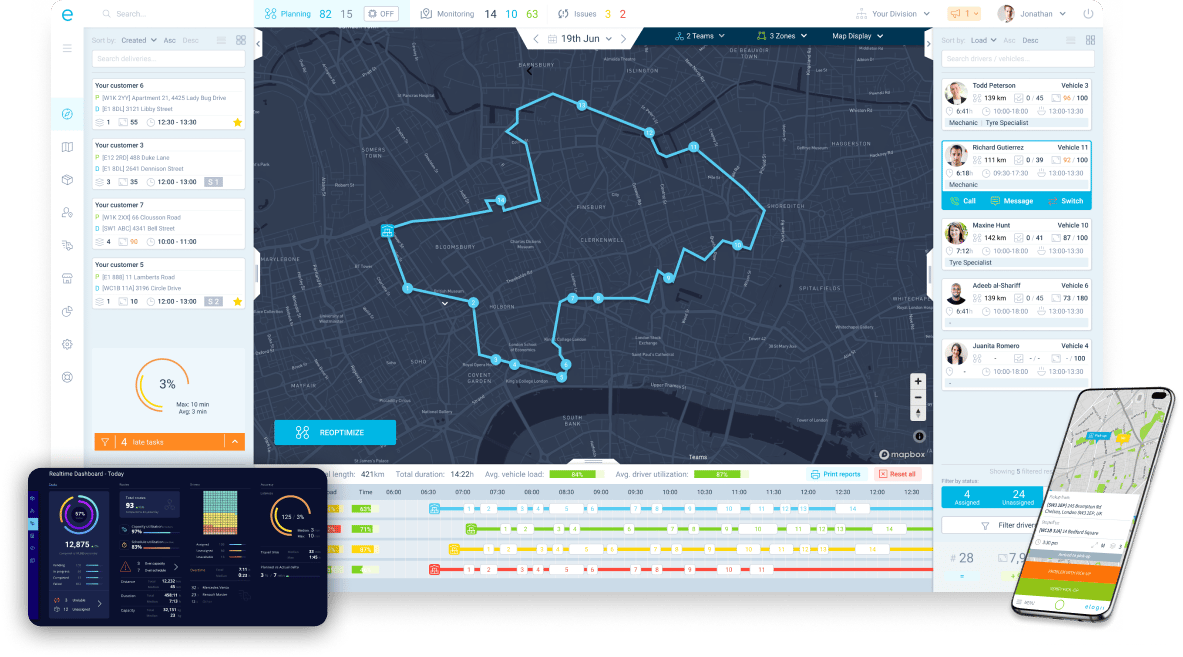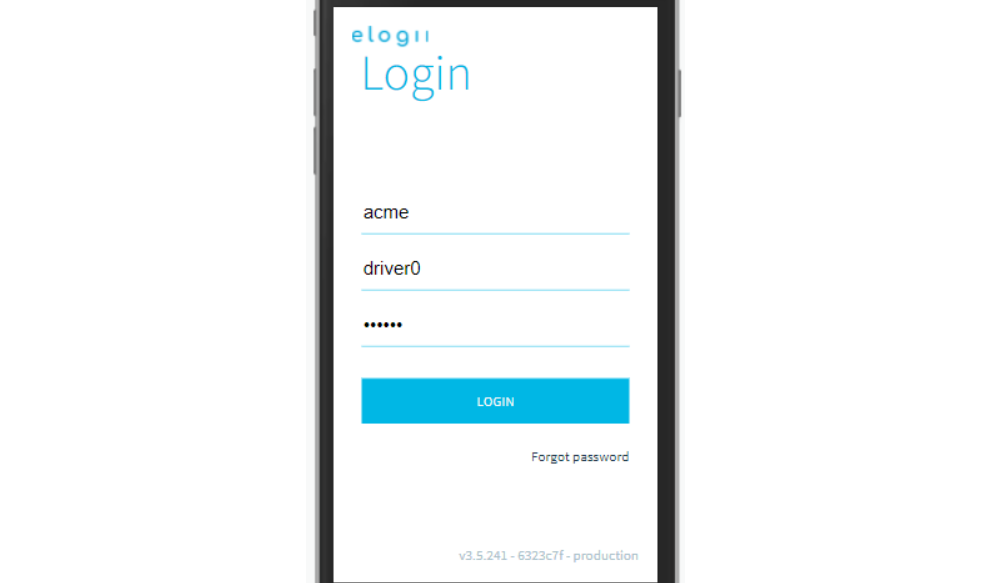10 Best Shipping Software for Delivery Businesses (According to Users)
Explore leading shipping software for small businesses: real-time rate comparison, label creation, order tracking, and streamlined workflows!
Home > Blog > Shipping Policy: How to Create a Shipment Policy [+Examples]
Retail and E-CommerceLearn how a strong shipping policy boosts trust and sales. Discover key elements, display tips, and how eLogii enhances efficiency and satisfaction.
When you're an online retailer, you can't build personal relationships with potential customers. They might have never seen your logo or visited one of your physical stores, if you have any.
So, how can you gain their trust and encourage them to make a purchase?
A well-crafted shipping policy can not only ease the doubts of your prospective customers but also give you a competitive edge. That leads to higher conversions and better customer loyalty.
In this article, we'll explain what a shipping policy is and highlight the key points to include. We'll also show you three examples from top ecommerce companies, and give you a sample shipping policy template.
A shipping policy is a document or page that outlines your rules, commitments, and procedures for shipped items. It usually covers returning lost items, exchange policies, who handles pricing, and delivery times.
Unlike a privacy policy, you don't have to include a shipping policy on your ecommerce site by law. However, it's highly recommended to ease customer concerns and ensure a smooth shipping process.
Every section of your shipping policy should address an important question from a potential customer.
In this part, we'll go over the key elements your shipping policy should include.
Here, explain the different mail carriers your customers can choose from (e.g., USPS, UPS, FedEx).
Most modern ecommerce platforms like Shopify and BigCommerce will automatically show this information during checkout.
Questions to answer:
Provide detailed information about shipping costs.
Unless you offer free shipping, don't just hide this info on a policy page — also include shipping costs on the checkout page, and on any receipts or invoices.
Questions to answer:
Delivery times are crucial for today's shoppers, so be sure to include estimated delivery times for different states and countries.
Questions to answer:
Clearly explain your policy on lost or damaged products. Mention if you replace them, offer a full refund, cover return shipping costs, and more. For more details, check out our post on delivery exceptions.
Questions to answer:
Explain your return, exchange, and refund policy, including shipping costs, time limits, and other details.
Questions to answer:
If you ship internationally, provide information on costs, estimated shipping times, and other relevant details for different countries or regions.
Questions to answer:
For international orders, explain how you handle foreign sales tax and import fees. Mention if these are included in your product prices.
Questions to answer:
If you ship beyond the continental United States, mention any extra costs or additional shipping or processing time.
Questions to answer:
If you've covered all the important sections in your policy, your potential customers have all the information they need.
However, it won't matter how great your policy is if your customers never see it.
So, where should you display your shipping and return policy? Should you hide it on a dedicated policy page linked at the bottom of your website’s footer?
Below, we outline the best places to highlight your policy.
FAQ Pages
One effective way to highlight your shipping policy is to break it down into logical questions and include it in your help center or FAQ section.
Here’s a great example from Crocus.co.uk, UK's leading gardening website:

Product Pages
Make sure to feature the most important details from your policy on product pages so your customers know what to expect.
Checkout Process
Verify key details such as shipping costs and estimated delivery times during checkout and include this information in the confirmation email.
Footer Link
Since consumers often look for policy links in the footer, it's a good idea to include a link to your shipping policy there, along with your privacy policy or terms and conditions.
In this section, we'll look at and compare shipping policies from three major ecommerce companies.
We'll analyze what they highlight, what they do well and what they could improve, and what you can learn from them to use in your own policy.
Example 1: Warby Parker’s Shipping Policy

Warby Parker clearly outlines the expected turnaround time for various products, including processing and handling time. The policy specifies the number of business days a customer should wait before receiving their product.
By being upfront about the order processing time, they help reduce unnecessary customer support inquiries about “late” or “delayed” orders.
Warby Parker promotes itself as a more convenient option than visiting an optometrist or physical store. That's why their free shipping and returns policy is prominently displayed not only on their dedicated policy page but also on their homepage, product pages, and shopping carts.
If you want to enhance your customer experience, consider highlighting benefits like free shipping, fast delivery, or real-time order tracking on key pages.
Example 2: Home Depot’s Shipping Policy

Home Depot presents its shipping policy in an expandable FAQ format that's easy for customers to understand.
The page highlights key details, such as free shipping terms and whether shipping is available to Hawaii and Alaska.
The rest of the information is divided into expandable sections with clear, question-based headings. This makes it simple for customers to browse and find the answers they need.
Example 3: Best Buy’s Shipping Policy

Best Buy’s policy is different because it doesn’t list individual shipping costs and delivery times on the policy page.
Instead, it provides these details on the checkout page, making it easier for customers since they don’t need to search through a table for prices and delivery times.
If you place important information in more visible areas, you can use your policy page to guide customers to the relevant details, just like Best Buy does.
If you're using Shopify, you don’t need to manually add your policy to template files. Instead, use Shopify’s built-in shipping policy feature.
If you haven’t added a policy yet, look for a section on your Shopify dashboard homepage. Select the “Add shipping policy” link to begin. (If you don’t see it, go to Settings > Legal and scroll down to the “Shipping policy” section.)
From there, you can add your content using a rich text editor. If you have your policy in a Google or Word document, you can simply copy, paste, and save it.
It’s that easy.
You can quickly create your own custom shipping policy by editing and filling out a template.
Templates can help ensure you include all necessary details while saving time.
We’ve found a template example online and included a link to it in Google Docs.
Shipping and logistics don’t have to be dull and repetitive.
With the right strategy, you can turn your shipping and delivery process into a competitive edge, attract more sales, and boost customer loyalty.
Boost Sales with Free Shipping or Speedy Delivery
Online shoppers prefer free shipping over same-day delivery. In fact, 67% of those who pay for shipping want their items in 2 days, with next-day or same-day delivery being ideal.
To grow your ecommerce business, focus on speeding up your shipping process and ensuring accuracy.
Enhance Customer Experience for Greater Lifetime Value
Shipping and delivery are crucial parts of the customer experience when selling products online. If you can process and ship orders faster than your competitors, it will improve the shopping experience and help you build long-term customer loyalty.
Companies that prioritize customer experience see their customer lifetime value grow 60% faster than the industry average.
A shipping policy only becomes an advantage if it meets or exceeds customer expectations. The last thing you want is to promise more than you can deliver.
Having an ambitious shipping policy and sticking to it can be challenging, but when done right, it becomes a valuable asset for your business.
Here are some strategies to help you keep your shipping policy promises.
If you promise fast shipping, like delivering anywhere in the U.S. within a few days or a week, you need to have top-notch logistics to support that.
To meet customer expectations, you need efficient warehouses, well-placed distribution centers, and reliable partners.
eLogii can help you manage your fleet of trucks and drivers effectively. Our route optimization tools will automatically plan the most efficient routes for your delivery drivers, saving time on planning and more.
If you handle deliveries yourself, features like custom delivery time windows and real-time order tracking (with notifications) can help reduce failed deliveries and keep customers happy. This can significantly boost your logistics efficiency.

Loading and shipping multiple small packages over long distances can be tricky.
You need to assign orders based on what each vehicle can handle and the qualifications of each driver. Plan lunch breaks at the right times, keep track of all available cargo space in each vehicle, and manage daily restocking at the warehouse.
eLogii simplifies this process by automatically ensuring that vehicles are not overfilled or overloaded when picking and shipping goods.
Make sure customers see your policies by displaying them at checkout or offering an option to read them before finalizing their purchase. Many sites do this in a way that doesn’t disrupt the shopping experience.
For example, your checkout process could include a section for shipping methods with basic pricing and delivery info, along with a link to your policies on returns and refunds.
With the right route optimization tool, you can significantly speed up your shipping, boost accuracy, and reduce failed deliveries.
Ensure consistency by enforcing your shipping policy for all customers. Avoid giving some customers refunds while others don’t get any. Make sure every team member understands that upholding these standards is crucial.
Here’s how eLogii can help you implement your shipping policy effectively and give you a competitive edge.
eLogii automatically plans the most efficient routes for your drivers and vehicles. It takes into account vehicle capacity, driver workloads, customer time windows, and more.
Our route planning has helped clients reduce planning time by up to 80% while also increasing route efficiency and reducing human error—because our software handles all calculations automatically.

eLogii’s Driver App makes it simple for drivers to follow directions and stick to their schedule. It helps reduce human error by planning every delivery and location in advance with the quickest route available.
With live GPS tracking for your vehicles, you can give customers accurate ETAs or time windows. This lets them plan their day better and spend less time rearranging their work or deliveries.
Allow customers to track their delivery driver in real-time using a tracking number or link. This helps reduce the number of customer service calls about delivery times.
Enhance your customer experience and reduce failed deliveries by automatically sending SMS and email notifications before deliveries or service calls.
These features can significantly improve your shipping operations, from warehouse loading to last-mile delivery.
#1 J-Club
With eLogii, J-Club has achieved double-digit routing efficiency gains and drove 300-400,000km less per year. The company has positioned itself with the tools and infrastructure necessary to support a 3-4x growth trajectory.

#2 Ananas

eLogii helped Ananas, a subsidiary of Delta Holdings, reach exceptional customer satisfaction with features like live tracking and real-time updates.
They saw a 50% drop in "Where's my order?" calls and a 25% reduction in internal calls per order.
“eLogii had everything that we needed and envisioned in terms of functionality we needed to operate in the last mile” - Felipe Alves, COO
Felipe goes on to explain:
“The amazing way to see where the driver is, when the driver is going to come, the range of time that the driver is going to come to their house and then when it is closer to that the specific estimated time of arrival transforms completely the customer experience for the better. It not only makes the customer happier, but also reduces my call center costs. Today I do not have calls anymore from customers asking “where is my package?”
At first, a shipping policy might seem like just a dull legal document with little impact on your business. But that’s only true if you’re okay with mediocre logistics and shipping.
If you’re committed to giving your customers a great experience, it includes how you handle shipping and delivery.
By focusing on optimizing your logistics, surpassing your competitors, and exceeding customer expectations, you can turn a simple shipping policy into a powerful advantage that boosts customer loyalty and lifetime value.
Explore leading shipping software for small businesses: real-time rate comparison, label creation, order tracking, and streamlined workflows!
Learn why shipping costs have surged and discover strategies to cut expenses with eLogii's route optimization software for streamlined deliveries.
Learn why flat rate shipping works best for e-commerce, how much it costs to ship with UPS, USPS, and FedEx, and how it lowers shipping costs.
Be the first to know when new articles are released. eLogii has a market-leading blog and resources centre designed specifically to help business across countless distribution and field-services sub sectors worldwide to succeed with actionable content and tips.
